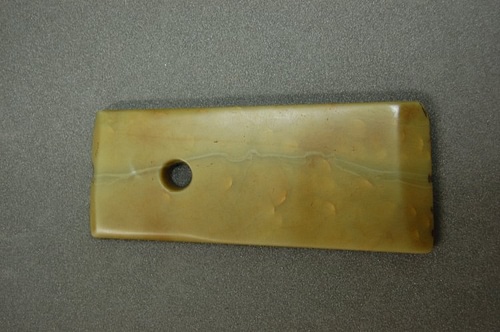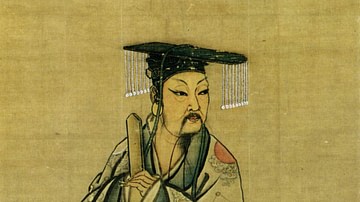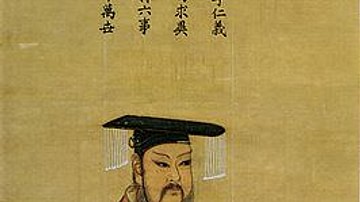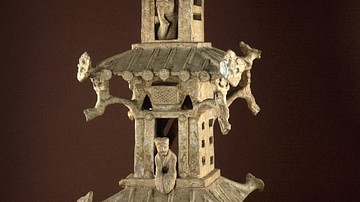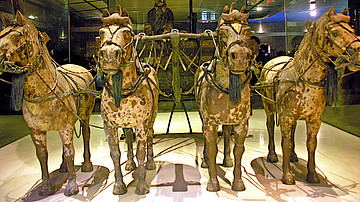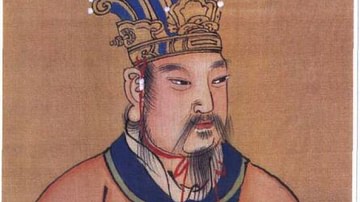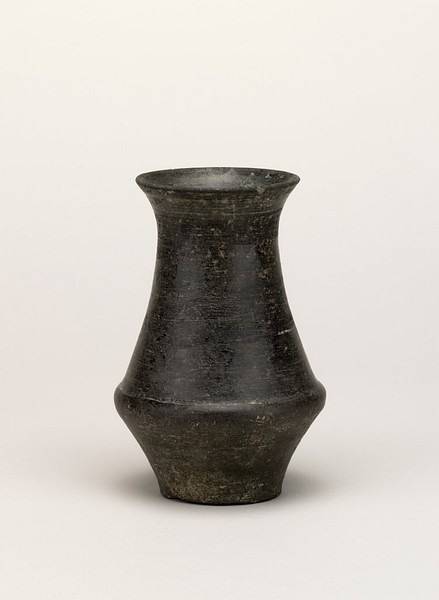
The Longshan Culture (aka Lung-shan) flourished in parts of late Neolithic northeast China during the third millennium BCE and was an important link in the development of Chinese civilisation from the independent neolithic communities to the first dynastic states. The culture is named after the Longshan site in Shandong province, but it is also sometimes called the Black Pottery culture after the distinctive pottery wares it produced. Tombs, fortifications, and the discovery of a solar observation platform indicate a sophisticated society with several distinct levels. By around 1700 BCE the culture had morphed with other regional cultures into a wider Chinese Bronze Age culture.
Development & Characteristics
The Longshan culture developed from the early Dawenkou tradition, also in Shandong province, from around 3000 BCE, and would then replace the well-established Yangshao culture in northern and central China. By the first quarter of the 2nd millennium BCE the Longshan culture, after experiencing some centuries of population decline for as yet unknown reasons, began to evolve into the Bronze age culture which would eventually form the Shang dynasty (c. 1600-1046 BCE).
The period of the 3rd millennium BCE saw an increase in social interaction between small regional units and the eventual development of settlements with defined social or political hierarchies. These occurred not only in relation to the Longshan culture as recent discoveries further afield indicate that across China similar developments were occurring. There is then evidence of local interaction between such settlements with each still operating as an independent chiefdom. The existence of a state apparatus connecting villages is still many centuries away. The Longshan culture thrived on agriculture and especially the cultivation of millet, making good use of the fertile soil of the Yellow River basin. Evidence of tool use includes the presence of spades and sickles. One of the most important of the Longshan sites is Hougang, but more than ten other major sites and many more lesser ones have been identified spread over the Henan, Shandong, and Shanxi provinces.
Many Longshan sites are notable for their packed earth walls, a new archaeological feature which indicates the presence of a more sophisticated social system than seen in the Yangshao culture. One example at the Pingliangti site has a wall which encloses a space of 34,000 square metres. The wall has two gates, one on the north and another on the south side. The walls at the site of Chengziya, the earliest to be built, were on average 6 metres high. These walls and finds of arrowheads and spearheads at Longshan sites strongly suggest that the culture had to defend itself more vigorously than other contemporary cultures elsewhere in China. The necessary defence against outsiders was also likely a factor in the development of a strong sense of cultural identity and unity.
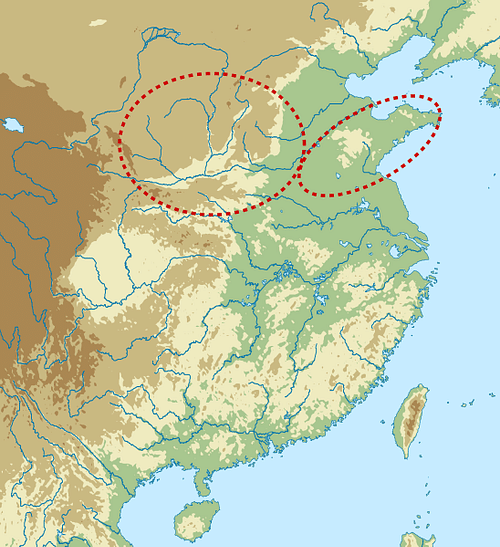
The frequent raised mounds within the walls at Longshan settlements and the presence of dwellings outside its perimeter suggest that only the elite residences were thus protected. At the even larger site of Taosi, which dates to 2600-2000 BCE, the wall encloses some 2.8 million square metres. Taosi includes cave and semi-subterranean dwellings, as well as a wall-enclosed cemetery. Although all tombs are located in the same ground, they indicate at least three distinct social levels.
Black Pottery
The black pottery produced by the Longshan is known for its glossy sheen and a general absence of decoration. The discovery of this distinctive pottery in the 1930s CE helped archaeologists to first become aware of the Longshan as a Neolithic culture distinct from the Yangshao with its red-brown pottery. Not all Longshan wares are black, as grey and also white examples exist. The fineness and extremely thin walls of the finished product is evidence of the use of the potter's wheel and professional pottery skills.
Longshan potters seemed to have concentrated on the form of vessels, which are extraordinarily varied and different from anything seen elsewhere. However, some do have decoration in the form of simple incised and impressed designs in the form of geometric patterns and sometimes animal masks. The most common shapes are jugs with pouring spouts, tall stemmed cups, handled cups, slim beakers, and tripod bowls with hollow legs which were used to heat liquids or as steamers. The fact that the vast majority of black pottery wares have been found in elite tombs and not in residential areas suggests that they were reserved for use by the elite only and then probably for ritual purposes rather than everyday use.
Longshan Artefacts
The excavated tombs at Longshan sites can be categorised into three types based on the number and value of the goods deposited within them. The minority (around 10%) measure some 3 x 2 metres and contain around 100 artefacts. The deceased in these tombs were placed inside a wooden coffin; sometimes there is more than one occupant per tomb. The middle group, also containing a wooden coffin, have between 20 and 30 artefacts. The last and most numerous group are mere pits and do not have the deceased in a coffin or any goods buried with them.
Besides many examples of the pottery described above, Longshan tomb artefacts include carved jades in the form of cong (squares with a cylindrical inner part which are of unknown use or significance), flat axe blades and rectangular tablets - both with a single pierced hole; painted wooden vessels; and imported luxury goods in the form of ivories, alligator skin drums, and turtle shells. Many Longshan tombs contain the skeletons of pigs or only their skulls and mandibles. These animals were probably sacrificed as part of the burial ritual and indicated wealth and/or social rank (the richer the tombs the great the number of pig remains). In addition, there are traces of perishable objects which have no longer survived but their impression has been left in the soil of tombs, notably basketwork.
Additional finds such as a copper bell, bronze vessels, and engraved metal shards indicate that the Longshan were accomplished metalworkers. The presence of copper ore and slag indicate such goods were manufactured locally and not imported. The bell was made using a clay mould, an advanced technology for the period. Finally, finds of so-called oracle bones, actually burned animal shoulder blades, indicate the practice of scapulimancy - that is the reading of cracks in the bone caused by fire, which diviners would interpret with relevance to future events.
Solar Observatory
The Taosi site is particularly noteworthy for its solar observatory, constructed in the mid-3rd millennium BCE and one of the oldest of its kind anywhere. Discovered in 2003 CE, the observatory consists of three circular platforms, one on top of the other, with each having a rammed earth wall. The whole is surrounded by another earth wall measuring some 50 metres in diameter. The top platform, with a diameter of 24.5 metres, has a wall which includes 13 square pillars. The spaces between these columns acted as sight lines for solar observation from a centrally-placed platform. Experimentation indicates the observatory was used particularly during the summer and winter solstices and was probably used to create an accurate solar and lunar calendar. Such record keeping may also indicate the presence of an early writing system, an idea partially supported by the presence of ordered markings on Longshan pottery shards.
